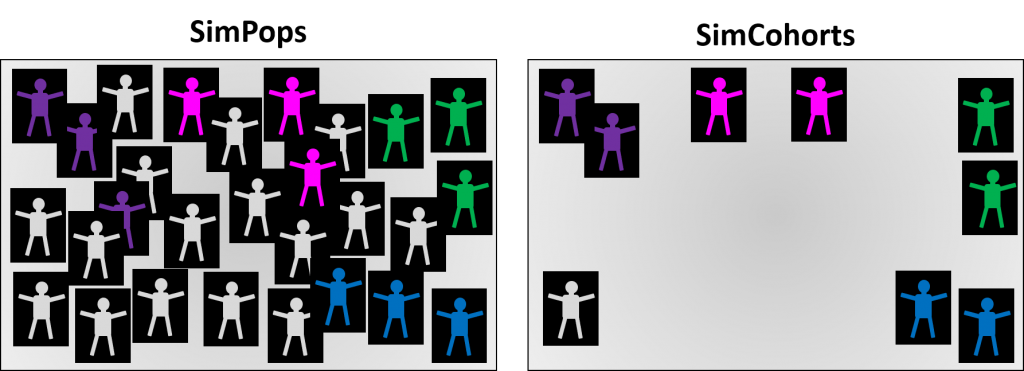SimPops are a collection of simulated individuals that include variability in the underlying biochemical, mechanistic contributors to DILI, providing a simulated population that accounts for inter-individual variability. SimPops allow DILIsym users to explore the inter-individual variability in response to potential DILI-causing drugs. SimPops introduce variability into several important model parameters, including: baseline glutathione levels, cellular response to oxidative stress, hepatocellular recovery speed, inflammation, among many others. Drug-specific SimPops include variability in metabolism and distribution parameters.
SimPops have been used in numerous ways, including exploring the risk of methapyrilene toxicity across species and in assessing the effectiveness of varying courses of NAC treatment in humans.
DILIsym contains several SimPops for rats, mice, dogs, and humans that impart variability related to the DILI mechanisms of oxidative stress, mitochondrial toxicity, and bile acid transport disruption. The DILI-sim modeling team can also design SimPops population samples specific to a given application, if requested.
SimCohorts are relatively small groups of simulated individuals, consisting of a subset of individuals from existing SimPops, that are often utilized for screening purposes. There are currently several types of SimCohorts:
- random sample SimCohorts, which include a random sampling of individuals from an existing SimPops in DILIsym,
- sensitive SimCohorts, which include a subset of individuals from an existing SimPops with high sensitivity to specific hepatotoxicity mechanisms (i.e. RNS/ROS production, mitochondrial dysfunction, or bile acid transport inhibition),
- SimCohorts made up of a specified portion of an existing SimPops simply to allow for more efficient simulation (e.g. some SimPops have two SimCohorts, each with half of the simulated individuals included), and
- SimCohorts grouped according to attributes such as body weight or initial biomarker levels.

SimPops®
is computer software for use in the fields of biomedical research and healthcare, namely, customizable software designed for use by biopharmaceutical companies to simulate individuals with variability in one or more patient characteristics such as drug metabolism, drug distribution, and drug effects, in developing a simulated patient population for the purpose of predicting and recommending options available for drug development based on outcomes observed from the simulated patients and simulated patient population.




